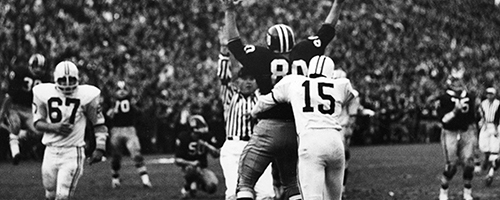Portland State art professor Harrell Fletcher brings communities together with his artwork
None other than The New York Times described artist and eight-year Portland State art professor Harrell Fletcher as “a gift to contemporary art.”
His work strays from traditional forms and focuses on bringing communities together. Instead of creating pieces that can be hung in a gallery, he focuses on work that can be displayed in public areas.
Fletcher’s collaborative and individual pieces span a variety of subjects and media. From photography to painting to statues, he displays everyday objects, such as scars and sunlight, as works of art.
His pieces have been displayed across the nation, including at Texas State University in San Marcos, Texas. He also exhibited The Forbidden Zone at the Berkeley Art Museum’s L@TE Program and showed his work at University of Hawaii, Manoa campus, earlier this year.
Fletcher, who now serves on the Chiron Studies committee at PSU, spoke with the Vanguard about his outlook on his own art and the art world at large.
Vanguard: Who are your major artistic influences?
Harrell Fletcher: Wendy Ewald, John Malpede, Larry Sultan, Jim Goldberg, Rick Lowe, Joan Didion, John Gossage, Miles Horton, John Holt…the list goes on.VG:
How long have you been working as an artist?
HF: I’ve made art since I was a little kid, but I’ve been making a living as an artist since I was about 25 years old.
VG: What inspired you to become an artist?
HF: I don’t recall not thinking of myself as an artist. My family was always very supportive of my creative interests.
VG: How did you end up at PSU?
HF: I did a lecture at PSU in 2004 for the MFA program and was then asked to apply for a job that was opening up in sculpture. Somehow I got the job. I had already been living in Portland, so it was convenient for me to start teaching at PSU.
VG: What do you think of the art department here at PSU?
HF: That’s a complicated question because I have a complicated relationship to the art department. I think there are many very good things about it. The graphic design program is doing amazing things these days, for instance. I think the art department is doing some great work and has tons of potential. It’s been interesting trying to develop the Art and Social Practice program over the last five years. Some people from the department have been very supportive, and I think others have not been so supportive and maybe have had a hard time figuring out what I’m up to. Everything is going well at the moment, though.
VG: Have you learned anything from your students?
HF: So many things, I don’t even know where to start. The way that I teach is very participatory, so the students are treated as equals, and we all learn from each other all the time. One example is that I learned about various issues surrounding a high-speed rail line that is supposed to be installed between Los Angeles and San Francisco from one of my students, Travis Souza, whose family owns land in the Central Valley that the train would go through. In an attempt to find out more, he and two of his brothers walked the 500-mile proposed route and talked to people along the way who would be impacted by the high speed rail line in both positive and negative ways.
VG: You invite community members to get involved with your projects. Why?
HF: That is a big question. In some ways, I think we need to examine why artists don’t do that normally. I would feel strange about just producing art that I liked and then expecting people from the public to appreciate and support that work. That would feel egotistical to me. I think it makes more sense to work in collaborative ways that share the role of being the artist with members of the public so that the work is more relevant to them.
VG: You say you like to share the artistic process with members of the public. Does that make everyone an artist? If so, how would you define art?
HF: I would say that everyone has the potential to be an artist if they want to think of themselves in that way. Some people have no use for calling themselves an artist, so for those people there is no reason to do that. But if someone wants to think of themselves or someone else as an artist that’s totally fine. You don’t need to be credentialed to be an artist. I think that art is just a construct, not anything intrinsic, so whatever anyone calls art is art as far as I’m concerned.
VG: How do you think your work has evolved since you’ve begun?
HF: I spend less time worrying what the “art world” thinks about what I’m doing.
VG: Your art has recently been shown in galleries all over the country. How has this affected your career?
HF: I’ve been presenting my work nationally and internationally for a long time now. It’s just been a slow development for me for a couple of decades now.
VG: What projects are you currently working on?
HF: I’m making a yearbook for the Hammer Museum in Los Angeles with one of my grad students, Adam Moser. I’m doing a project with my wife, Wendy Red Star, in St. Augustine, Fla., about the history of indigenous people there. I’m curating a show at the San Francisco Museum of Craft and Folk Art about the intersection between art and agriculture. Those are a few of the projects I’m working on at the moment.




